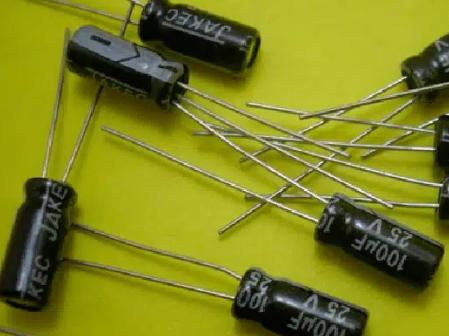What’s the difference between bypass capacitor and decoupling capacitor?
Bypass capacitors and decoupling capacitors play indispensable roles in electronic circuits, ensuring stability, reducing noise, and maintaining efficient functionality. These passive components act as critical elements in suppressing fluctuations, providing clean power, and enhancing signal integrity within complex electronic systems.

Understanding Bypass capacitors and Decoupling Capacitors
Bypass CapacitorsBypass capacitor
Bypass capacitors, commonly referred to as power supply or smoothing capacitors, are strategically placed between the power and ground lines of an integrated circuit (IC) or a component. They effectively filter out high-frequency noise and unwanted signals present in the power supply, ensuring that the voltage remains stable and constant. Bypass capacitors act as a direct pathway for AC signals, diverting them away from sensitive components and preventing interference or voltage ripples.Decoupling CapacitorsDecoupling capacitor
Decoupling capacitors, on the other hand, are positioned near specific components, such as ICs or integrated circuits. Their primary purpose is to provide a local and immediate source of energy during transient voltage fluctuations or sudden current demands. Decoupling capacitors swiftly respond to sudden changes in current, effectively supplying the required charge and stabilizing the voltage to prevent disruptions or voltage drops in the power supply lines. This ensures that individual components receive stable and noise-free power.
Importance in Electronic CircuitsStability and Noise Reduction:
Bypass and decoupling capacitors are essential for maintaining stability within electronic circuits. They minimize voltage fluctuations caused by noise, high-frequency signals, or sudden load changes, ensuring the smooth and uninterrupted operation of sensitive components.
Signal Integrity:
By filtering out unwanted noise and voltage spikes, these capacitors enhance signal integrity. This is particularly crucial in high-speed digital circuits or RF systems, where even minor fluctuations can degrade performance or cause errors.
Preventing Ground Loops and Interference:
Bypass and decoupling capacitors play a crucial role in preventing ground loops and electromagnetic interference. They offer a low-impedance path to ground, reducing the likelihood of interference and maintaining a clean and stable ground reference.
Bypass capacitors and Decoupling Capacitor ManufacturersMurata Manufacturing Co., Ltd.: Murata is a leading manufacturer of electronic components, including a wide range of capacitors suitable for bypass and decoupling applications.
TDK Corporation: TDK offers a variety of capacitors, including ceramic capacitors and multilayer ceramic capacitors (MLCCs), suitable for bypass and decoupling purposes.
AVX Corporation: AVX manufactures a diverse range of capacitors, including ceramic, tantalum, and film capacitors, suitable for bypass and decoupling in electronic circuits.
KEMET Corporation: KEMET specializes in capacitors, offering solutions like ceramic capacitors and tantalum capacitors suitable for bypass and decoupling applications.
Vishay Intertechnology: Vishay produces a wide range of capacitors, including ceramic, film, and tantalum capacitors used in various electronic applications, including bypass and decoupling.
Nichicon Corporation: Nichicon manufactures electrolytic capacitors and other types suitable for bypass and decoupling purposes in electronic circuits.
Panasonic Corporation: Panasonic offers a range of capacitors, including aluminum electrolytic capacitors and film capacitors, suitable for bypass and decoupling applications.
Taiyo Yuden Co., Ltd.: Taiyo Yuden specializes in multilayer ceramic capacitors (MLCCs) and other capacitor types suitable for bypass and decoupling purposes.
Würth Elektronik: Würth Elektronik manufactures various types of capacitors, including MLCCs and tantalum capacitors, suitable for bypass and decoupling applications in electronics.
Conclusion
Both bypass and decoupling capacitors are essential in reducing noise and ensuring stable power distribution within electronic circuits. They complement each other and are often used together to maintain a clean and stable power supply for sensitive components, reducing the risk of malfunctions due to noise or voltage fluctuations.
在线留言询价
- 一周热料
- 紧缺物料秒杀
| 型号 | 品牌 | 询价 |
|---|---|---|
| RB751G-40T2R | ROHM Semiconductor | |
| MC33074DR2G | onsemi | |
| TL431ACLPR | Texas Instruments | |
| BD71847AMWV-E2 | ROHM Semiconductor | |
| CDZVT2R20B | ROHM Semiconductor |
| 型号 | 品牌 | 抢购 |
|---|---|---|
| IPZ40N04S5L4R8ATMA1 | Infineon Technologies | |
| BU33JA2MNVX-CTL | ROHM Semiconductor | |
| TPS63050YFFR | Texas Instruments | |
| BP3621 | ROHM Semiconductor | |
| ESR03EZPJ151 | ROHM Semiconductor | |
| STM32F429IGT6 | STMicroelectronics |
- 周排行榜
- 月排行榜
AMEYA360公众号二维码
识别二维码,即可关注























